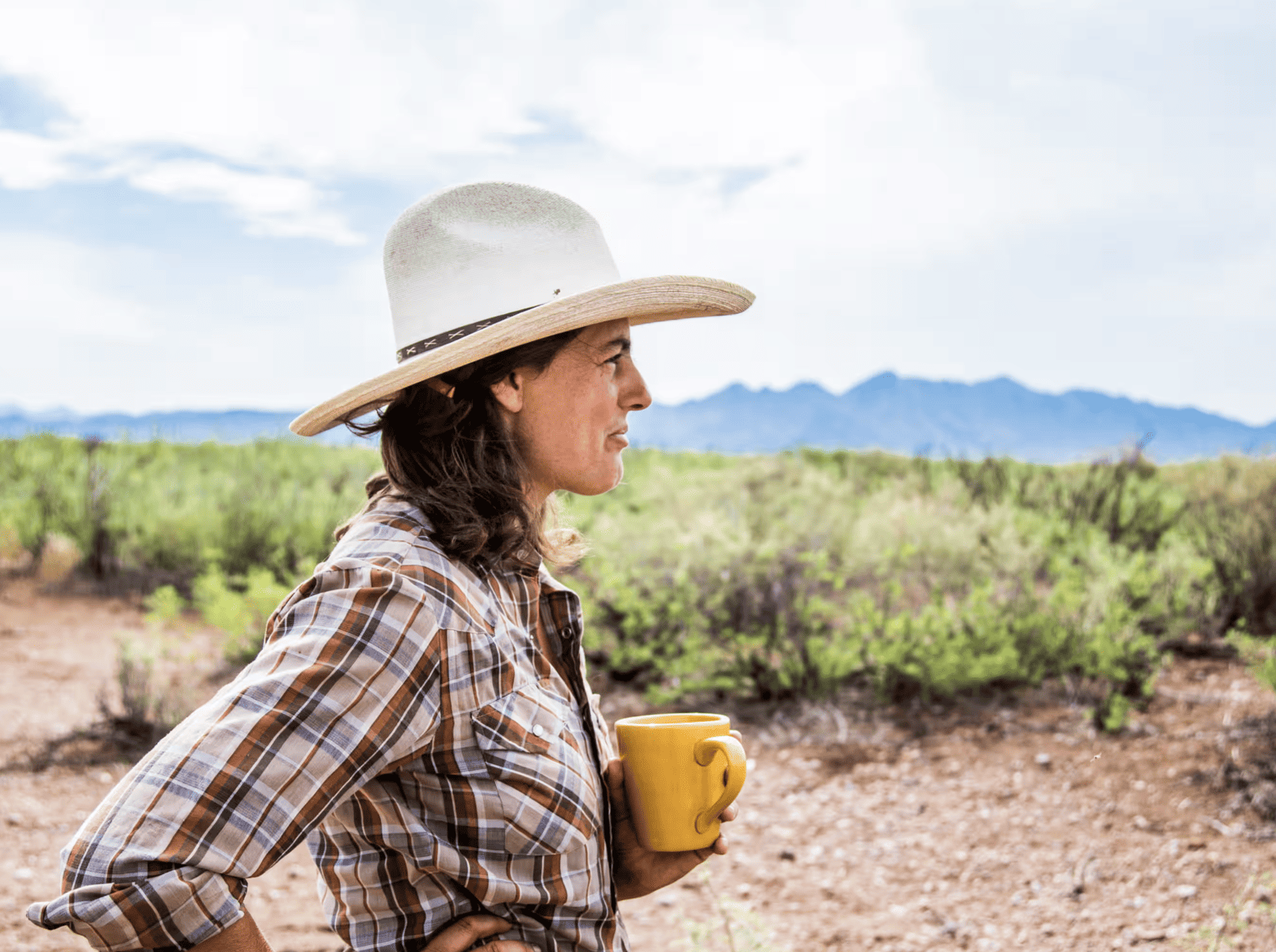

Anastasia Rabin ranches on a 16-acre piece of land in Cochise County. But what will she do out here without water? Photograph: Audra Mulkern
By 9am, it’s already 100F (38C). In the desert afternoons, rain gathers on the horizon, teasing – and then it disappears. There is so much heaviness, so much waiting.
I pulled on to the ranch of Anastasia Rabin with Audra Mulkern, a Washington-based photographer and founder of the Female Farmer Project. We were on assignment for a story and chasing a statistic: according to the most recent US census, Arizona is the state with the highest proportion of female farm operators.
Despite the fact that women have always farmed, they have been left out of our agricultural narrative. An incomplete story has real consequences: women have been left off land titles and bank documents; they have been denied federal loans and training opportunities; and until the 1982 census of agriculture, female farmers were not counted at all.
At Anastasia’s, we shadowed her on her daily chores – as she milked the goats and then walked them out on the range to browse the desert brush. And she introduced us to Jo Geerdes, her 78-year-old neighbor and mentor. At the confluence of their stories, we felt the pull of possibility: the potential for mentorship between female farmers and the return of a much-needed business for southern Arizona. And we felt the harsh clip of reality: the human cost of food production amid an arid landscape being sucked dry of its groundwater.
For Audra and me, their story has lingered.
Anastasia Rabin, 39, ranches on a 160-acre piece of rangeland in Cochise County. The land is scrubby, flat, dry – dotted with creosote bushes and spindly mesquite trees. On the horizon are the silver silhouettes of grain silos.
In Arizona, 45% of principal and secondary farm operators are women. Nationally, that same statistic is 30% – a total of 1 million women operating farms or ranches on more than 62m acres and generating $12.9bn in annual agricultural sales.
Farming does not respect personal boundaries, exhaustion levels, or breaking points. It is a lifestyle, a spilling over of beauties and emergencies – sick animals, bolting crops, impending freezes, equipment failures, last-minute orders – and all of the coinciding human actions and emotions.
A farmer cannot ever […]
Full article: ‘If there’s no water, what’s the point?’ Female farmers in Arizona – a photo essay
Clean water is essential for life, yet millions of Americans unknowingly consume contaminants through their…
Human brains contain higher concentrations of microplastics than other organs, according to a new study, and the…
From the Office of the Governor: In anticipation of a multi-day, significant atmospheric river in Northern California,…
From Governor Newsom: Scientists, water managers, state leaders, and experts throughout the state are calling…
Photo: A harmful algal bloom in Milford Lake, Kansas, made the water appear bright green.…
An expanded plastic foam coffee cup is at a donut shop in Monterey Park, California.…